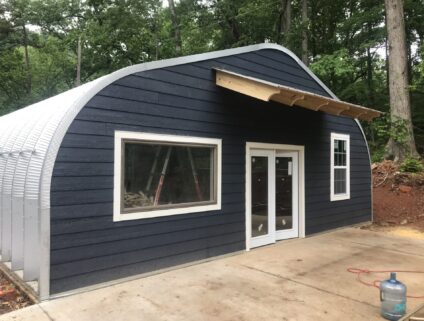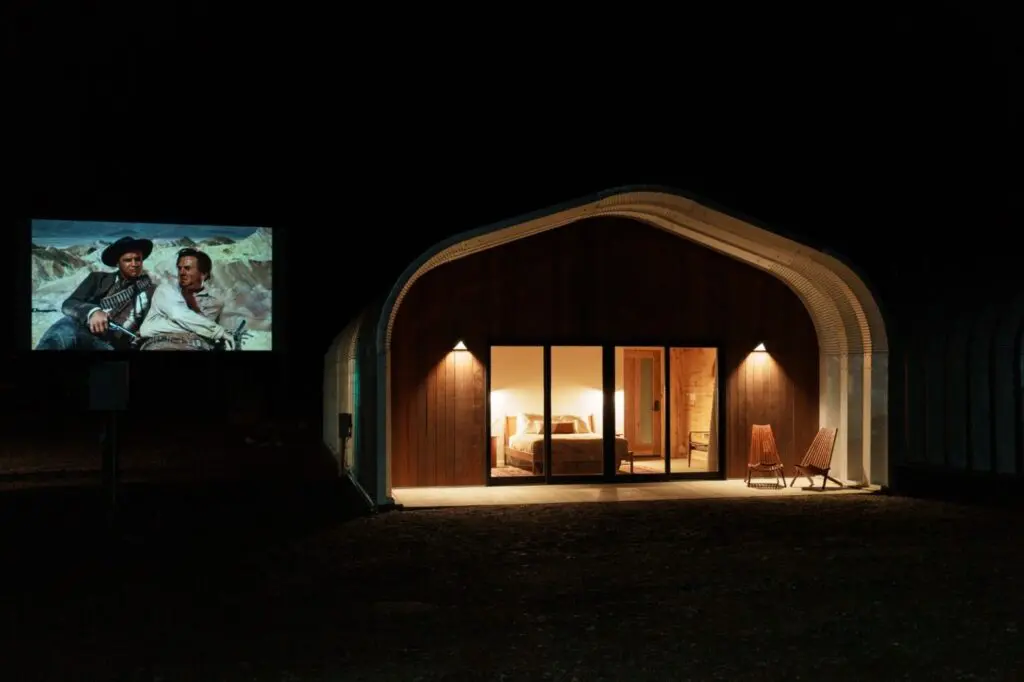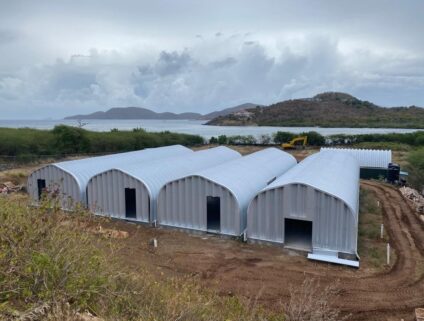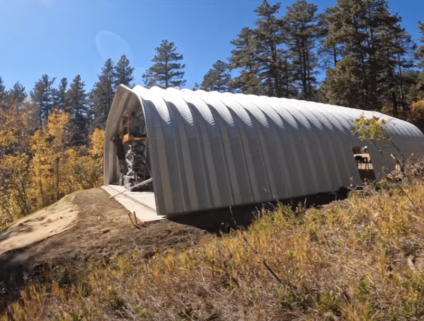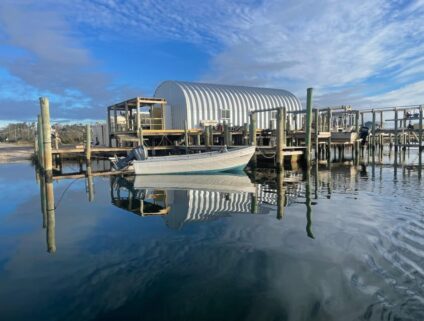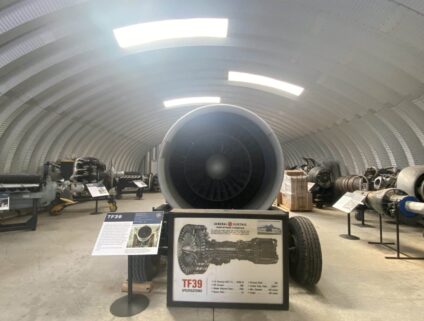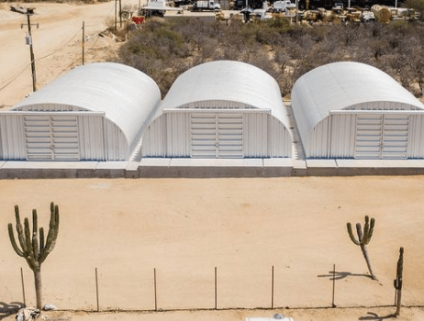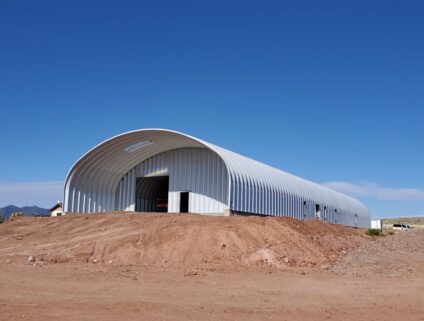Metal Buildings Protect Los Alamos Residents
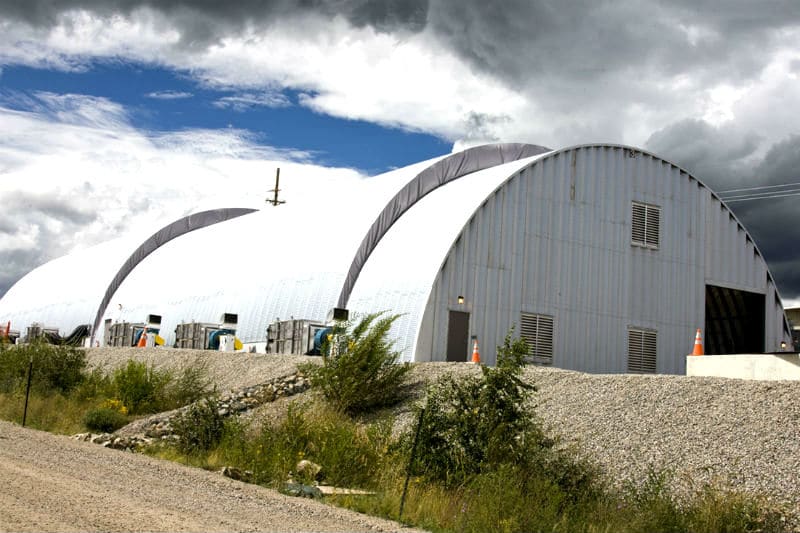
Safety is a primary concern for Los Alamos National Laboratory as they work on excavating Material Disposal Area B (MDA-B). In order to keep any contamination from reaching the air, Los Alamos chose to enclose their excavation sites with SteelMaster steel buildings. The buildings provide 100% usable space on the interior so there is plenty of room for the excavation equipment.
ENSURING PUBLIC SAFETY Sixty years ago, the pioneers of the Atomic Age were focused on a mission. Time was short. There were no environmental controls. When they needed to dispose of contaminated clothing and equipment, they dumped it into a nearby landfill called Material Disposal Area B (MDA-B). Now, 60-plus years later, funding from the American Recovery and Reinvestment Act is paying to clean up the six-acre site. But when few records exist and plutonium is involved, you’re darn careful about how you dig things up.
“We spent about a year researching MDA-B,” said Gordon Dover, deputy director of the Recovery Act projects at the Lab. “There aren’t a whole lot of records about it from the 1940s, but we reviewed everything there was. We also talked with people who worked at the facilities that used MDA-B during that time period.”
Prior to beginning excavation, the team performed 87 cores on the site to determine what it contained. The site was closed in 1948 when it spontaneously combusted—for the third time—and billows of pink smoke rose into the air. “We determined that MDA-B contains about 200 grams of plutonium spread out as dust on old clothing and equipment over six acres,” Dover said. “That much plutonium grouped together is only about the size of a golf ball. Any plutonium at all, however, is reason enough to take every possible precaution.”
When MDA-B was used as a disposal site in the 1940s, its location on what is now DP Road was actually somewhat removed from downtown Los Alamos. Now, however, a number of businesses are located across the street. The proximity of those businesses makes cleaning up this old dump even more challenging. “Safety is our first priority,” Dover said. “The alpha rays emitted by plutonium can be stopped by a piece of paper but are dangerous if inhaled, so preventing any type of contamination from reaching the air was our first consideration.”
To address that concern, the excavation of MDA-B is occurring within a number of large metal structures that resemble quonset huts. These metal enclosures are equipped with High Efficiency Particulate Air (HEPA) air monitoring, which filters more than 99 percent of contaminants from the air. There also are two different air monitoring systems outside of the structures: one that provides real-time air monitoring and another, more sensitive system that is read every two weeks and measures any sort of variation in air quality. In addition, the equipment that does the actual excavation is equipped with a sensitive filter that alerts workers if contamination is detected. All workers, of course, wear protective clothing and supplied air while working inside the structures.
The need for these safeguards became apparent in late August, when a piece of pipe was unearthed that contained a high level of radioactivity. To ensure worker and public safety, excavation was paused while officials reviewed safety procedures and disposed of the pipe appropriately. “We dug up a piece of the past,” Dover said. “Items like this one is why we are doing this project in the first place.”
ARRA Act of 2009 The American Recovery and Reinvestment Act of 2009 (Recovery Act) was signed into law by President Obama on February 17th, 2009. It is an unprecedented effort to jumpstart the US economy, create or save millions of jobs, and put a down payment on addressing long-neglected challenges so our country can thrive in the 21st century. The Recovery Act is an extraordinary response to a crisis unlike any since the Great Depression, and includes measures to modernize our nation’s infrastructure, enhance energy independence, expand educational opportunities, preserve and improve affordable health care, provide tax relief, and protect those in greatest need.
Categories

